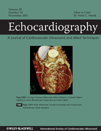A Large Coronary-Pulmonary Artery Fistula in a Cyanotic Patient Leading to Severe Biventricular Dysfunction and Heart Failure
Author Contribution: Aditya Kapoor: acquisition, analysis and interpretation of data; preparing and critically revising manuscript, approval of the submitted and final versions. Rohit Walia: acquisition of echocardiographic data, help in preparing manuscript and researching references, approval of the submitted and final versions. Sunil K Jain: acquisition and analysis of radiologic data, approval of the submitted and final versions. Sudeep Kumar: analysis of echocardiographic data, help in preparing and revising manuscript, approval of the submitted and final versions.
Abstract
In cases of pulmonary atresia (PA) with ventricular septal defect (VSD), the commonest source of pulmonary blood flow is via major aortoplumonary collaterals. Collaterals may also arise from the coronary arteries and the reported prevalence of such coronary-pulmonary artery fistulas (CPAF) in PA with VSD is 10%. However gross congestive heart failure (CHF) and ventricular dysfunction is extremely rare in such cases. We report a 17-year-old male with PA with VSD and a large CPAF from the anterior right aortic sinus connecting to the left pulmonary artery, who presented with severe CHF. The left anterior descending and the right coronary artery both arose from the proximal part of the CPAF, possibly leading to extensive coronary steal and biventricular dysfunction (Echocardiography 2011;28:E207-E211)




